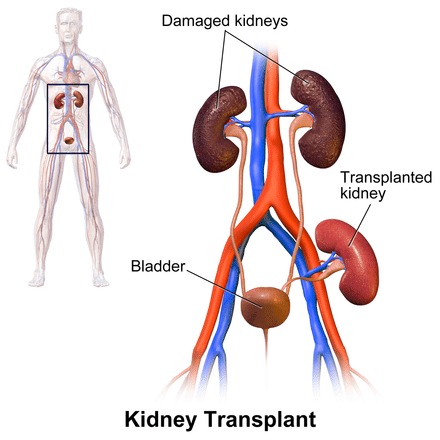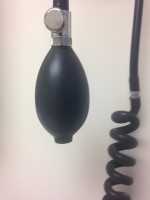Author Interviews, Dermatology, Kidney Stones, NEJM / 28.03.2024
NEJM: Some Hair Straightening Products May Cause Kidney Injury
MedicalResearch.com Interview with:
Thomas Robert, MD, AIX
Associate Professor of Nephrology
APHM (Assistance Publique - Hopitaux de Marseille)
Marseille, Provence-Alpes-Côte d'Azur, France
Prof. Emmanuel Letavernier, MD PhD
Nephrologist at Tenon Hospital
Paris, France
MedicalResearch.com: What is the background for this study?
Response: Our work was prompted by emerging concerns surrounding the potential nephrotoxic effects of hair-straightening products containing glyoxylic acid. This inquiry was instigated by a patient who experienced three repeated acute episodes of kidney injury in June 2020, April 2021, and July 2022, each occurring shortly after a hair-straightening procedure. Notably, these episodes resolved with hydration.
Upon examining the composition of the hair product used by the patient, which contained glyoxylic acid, and considering the patient's report of painful ulcer scalp during application and subsequent scalp scarring, we suspected a potential link between exposure to glyoxylic acid and kidney injury. Consulting with my colleague, Professor Emmanuel Letavenier, a specialist in crystalline nephropathy at Paris, confirmed this suspicion.
In summer 2023, cases series have been reported by an Israeli team (https://pubmed.ncbi.nlm.nih.gov/36610611/), who described 26 patients presenting with acute renal injuries after hair straightening treatments. Biopsies revealed calcium oxalate crystals in the kidneys. The Israeli researchers suspected an effect of formaldehyde and glycolic acid, another substance found in many cosmetic products, including hair straightening products, but were unable to provide conclusive evidence.
(more…)









 alResearch.com Interview with:
David C. Johnson, MD, MPH
Department of Urology
University of North Carolina School of Medicine
Medical Research: What are the main findings of the study?
Dr. Johnson: The first main finding from this study is that the likelihood of benign pathology after surgical removal of a renal mass suspected to be malignant based on pre-operative is inversely proportionate to size. This concept is well-established, however we systematically reviewed the literature for surgical series that published rates of benign pathology stratified by size and combined these rates to determine a single pooled estimate of benign pathology of pre-operatively suspicious renal masses for each size strata. Using benign pathology rates from US studies only, we found that 40.4% of masses < 1 cm, 20.9% of masses 1-2 cm, 19.6% of masses 2-3 cm, 17.2% of masses 3-4 cm, 9.2% of masses 4-7 cm, and 6.4% of masses >7 cm are benign.
The more novel finding from this study was the quantification of a previously unmeasured burden of over treatment in kidney cancer. By combining the above mentioned rates of benign pathology with epidemiological data, we estimated that the overall burden of benign renal masses surgically removed in the US to approach 6,000 per year in 2009. This represented an 82% increase over the course of a decade. Most importantly, we found an overwhelmingly disproportionate rise in the surgical treatment of renal masses in the smallest size categories – those which were most likely to be benign. We found a 233%, 189% and 128% increase in surgically removed benign renal lesions < 1 cm, 1-2 cm, and 2-3 cm, respectively from 2000 – 2009 in the US.
alResearch.com Interview with:
David C. Johnson, MD, MPH
Department of Urology
University of North Carolina School of Medicine
Medical Research: What are the main findings of the study?
Dr. Johnson: The first main finding from this study is that the likelihood of benign pathology after surgical removal of a renal mass suspected to be malignant based on pre-operative is inversely proportionate to size. This concept is well-established, however we systematically reviewed the literature for surgical series that published rates of benign pathology stratified by size and combined these rates to determine a single pooled estimate of benign pathology of pre-operatively suspicious renal masses for each size strata. Using benign pathology rates from US studies only, we found that 40.4% of masses < 1 cm, 20.9% of masses 1-2 cm, 19.6% of masses 2-3 cm, 17.2% of masses 3-4 cm, 9.2% of masses 4-7 cm, and 6.4% of masses >7 cm are benign.
The more novel finding from this study was the quantification of a previously unmeasured burden of over treatment in kidney cancer. By combining the above mentioned rates of benign pathology with epidemiological data, we estimated that the overall burden of benign renal masses surgically removed in the US to approach 6,000 per year in 2009. This represented an 82% increase over the course of a decade. Most importantly, we found an overwhelmingly disproportionate rise in the surgical treatment of renal masses in the smallest size categories – those which were most likely to be benign. We found a 233%, 189% and 128% increase in surgically removed benign renal lesions < 1 cm, 1-2 cm, and 2-3 cm, respectively from 2000 – 2009 in the US.
